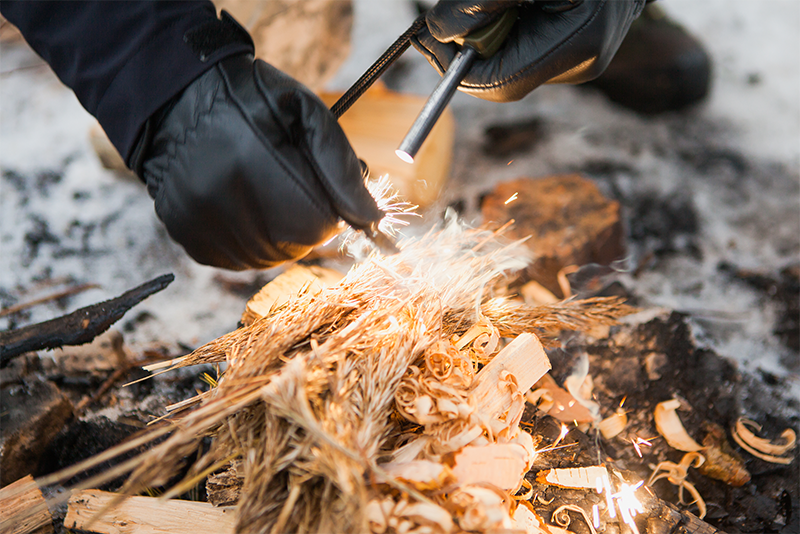
In a survival situation, the ability to create fire is paramount. Fire provides warmth, light, a means of cooking, and a psychological boost. However, nature doesn't always provide the ideal conditions for starting a fire easily. In this guide, we'll explore 10 essential ways to make a fire in a survival scenario, using techniques that range from traditional to modern. Equip yourself with these skills to ignite flames and ensure your survival even in the harshest environments.
- Friction Fire: Mastering the Bow Drill Technique
The bow drill technique is a classic way to start a fire using friction. By rotating a wooden spindle against a hearth board, you generate enough heat to ignite tinder. Mastering this technique requires practice, but it's a rewarding skill to have in your survival toolkit.
- Flint and Steel: Sparking the Flames
Flint and steel is a reliable method that's been used for centuries. Striking a piece of flint against a steel striker creates sparks that can ignite charred cloth or a tinder bundle. Practice the striking motion to produce a shower of sparks and catch them on your tinder.
- Firestarter Kits: Modern Convenience in a Survival Pack
Firestarter kits containing ferrocerium rods, tinder, and waterproof matches are essential in survival situations. The ferro rod produces sparks that can ignite your tinder, and the included tinder ensures a consistent flame-starting source.
- Solar Fire-Making: Harnessing the Sun's Power
On sunny days, you can use a magnifying glass or the bottom of a soda can to focus sunlight onto your tinder. The concentrated sunlight creates enough heat to spark a fire. This technique requires patience and clear skies.
- Fire Plough: Carving Out Flames
The fire plough technique involves dragging a dry piece of wood (the plough) through a groove carved in a drier wooden base. The friction generates heat, and charred material accumulates at the end of the groove, eventually igniting.
- Fire Piston: Compression Ignition
A fire piston uses rapid compression to create heat that ignites tinder. When the piston is rapidly pushed into the cylinder, the air inside becomes superheated and ignites the tinder. It's a more advanced technique that requires a specialized tool.
- Chemical Fire-Making: Potassium Permanganate and Glycerin
This chemical reaction can start a fire. By combining potassium permanganate and glycerin, an exothermic reaction occurs, creating enough heat to ignite surrounding materials. This method is effective but requires the right chemicals and precautions.
- Steel Wool and Battery: Sparks from a Common Pair
Rubbing steel wool against the terminals of a battery can create sparks that catch fire in the presence of a suitable tinder. This technique is convenient and can be effective when you have these items on hand.
- Fire by Electricity: Utilizing a Car Battery
If you have access to a car battery, you can create fire by connecting wires to create a spark. However, this technique should only be used as a last resort due to the potential risks involved.
- Fire-Making Tools: Resourcefulness and Innovation
In a survival situation, resourcefulness is key. Utilize anything from glass bottles to flammable liquids to create fire. However, exercise caution and consider safety at all times when trying unconventional methods.
Conclusion:
Survival fire-making techniques are essential skills for anyone who ventures into the outdoors. By mastering these methods, you're equipped to start a fire regardless of the situation or available resources. Remember, practice is vital. Experiment with different techniques in controlled settings to build your confidence and proficiency. With these 10 fire-starting techniques in your repertoire, you'll have the power to conquer the cold, cook food, and boost your spirits even in the most challenging survival scenarios.